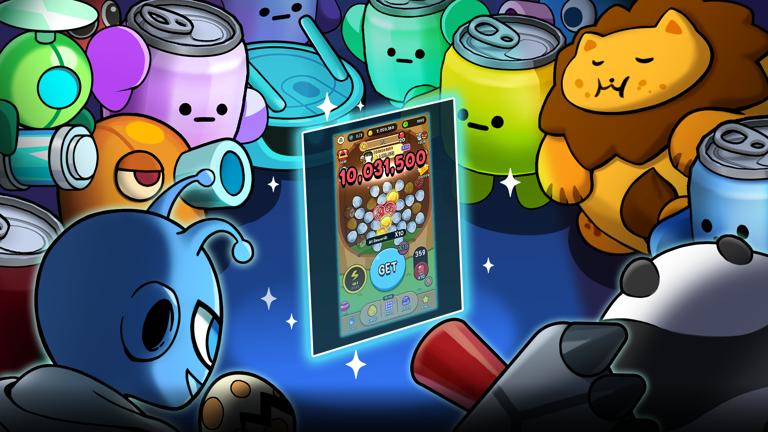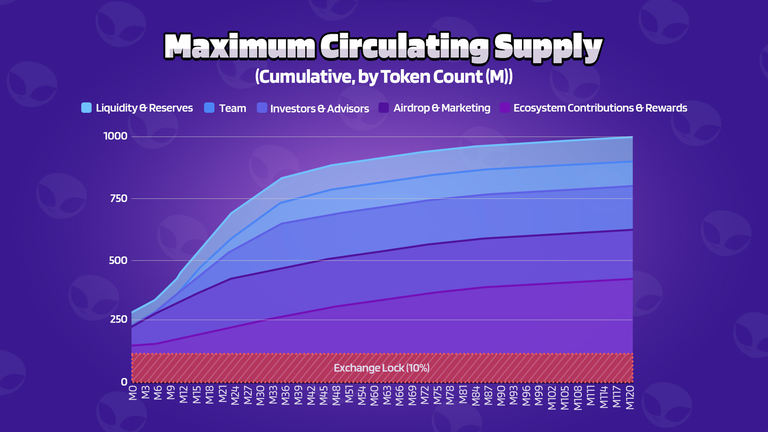What is Gomble (GM)?
A Modular Blockchain Gaming Infrastructure Connecting Social Gameplay, Developer Tools, and Tokenized Incentives

Introduction
Gomble is a blockchain gaming infrastructure developed by 111Percent, a South Korean game studio recognized for its portfolio of casual mobile games. The platform combines traditional game mechanics with blockchain features such as on-chain identity, squad-based missions, and tokenized rewards. By integrating these components into a modular system, Gomble enables both players and developers to engage with blockchain functions without requiring specialized knowledge. Through its native token GM, the platform introduces a structured economic and governance layer that underpins gameplay, development tools, and ecosystem coordination.
What is Gomble (GM)?

Gomble is a blockchain gaming infrastructure developed by 111Percent, a South Korean casual game studio with a track record of over 100 million downloads across its titles. The project introduces blockchain-based mechanics into familiar mobile gaming environments, focusing on accessible user experiences and game ownership models. Gomble uses its native token, GM, to support economic and governance functions across its games and related applications.
The platform’s architecture centers on a social infrastructure system that connects player identities, contributions, and engagement across games. Through mechanisms like squad-based missions, team-based staking, and cross-game reward systems, the project incorporates blockchain features without requiring prior technical knowledge from users. The stated objective is to bridge traditional gaming and blockchain by offering utility-driven incentives and interoperable systems.
The initial application of the Gomble framework is showcased in RumbyStars, a mobile game featuring can-shaped characters and a competitive gameplay structure. This game operates as a gateway to RumbyWorld, an environment in which developers can create independent games or NFT projects using Gomble’s infrastructure. This is positioned as a Game-as-a-Service layer where participants are provided with tooling to integrate on-chain user data, create reward mechanics, and publish casual games using the Rumby intellectual property.
History and Team of Gomble

Gomble was developed under 111Percent, a game studio established in South Korea that has released several casual gaming titles with high download volumes. The studio initiated the Gomble project as an independent Web3-focused branch designed to combine its expertise in mobile games with blockchain infrastructure. The vision paper published on GitBook outlines a structured transition from traditional gaming to blockchain-enhanced experiences, specifically targeting mobile-native audiences.
The project’s leadership consists of experienced professionals from the gaming and technology industries. Jihoon Byun serves as CEO of Gomble. Prior to leading Gomble, he held the position of Chief Operating Officer at 111Percent. His background includes roles across game operations and executive strategy. Seongwook Kim is the project’s Chief Technology Officer. He has over ten years of experience in game development and was previously the founder of Happy Elements Korea, a company focused on mobile and social games. His technical background includes a specialization in scalable gaming infrastructure.
Minseok Lee is the Chief Operating Officer, with a professional history in marketing. He has previously worked at Kakao Games and Netmarble, where he led promotional and market expansion strategies for several game titles. Other team members include contributors from Google, SK Telecom, and Kakao Brain, reflecting a mix of software engineering, product design, and AI research backgrounds.
The team’s composition demonstrates a specific alignment with the demands of operating in mobile gaming markets while integrating blockchain-based backend systems. The GitBook documentation also indicates that the team emphasizes minimizing the cognitive load for users interacting with blockchain features.
Investors of Gomble

Gomble raised $10 million in seed funding from a group of venture firms and strategic backers in the blockchain and gaming sectors. This funding round was led by Binance Labs, the investment division of Binance. The round also included participation from Animoca Brands, Spartan Group, Hashed, Shima Capital, IOSG Ventures, Altos Ventures, Foresight Ventures, and BigBrain Holdings.
Binance Labs is known for supporting early-stage projects across DeFi, infrastructure, and gaming. Animoca Brands is an active investor in NFT and Web3 gaming projects, and has supported products like The Sandbox and Phantom Galaxies. Hashed is a South Korean blockchain investment firm with exposure to infrastructure and consumer-facing applications. Spartan Group and IOSG Ventures are both active in Web3 ecosystems, with a portfolio that includes cross-chain protocols, liquidity products, and blockchain gaming platforms.
Each participating investor contributes a different area of domain expertise. While some provide advisory support on token design and go-to-market strategy, others offer ecosystem partnerships, node infrastructure, or exchange listings. The composition of the cap table suggests a coordinated effort to support Gomble through its initial launch phases and onboarding of early users and developers.
Gomble Main Features
Gomble Squad

Gomble Squad functions as a social gaming hub where players can form or join squads to participate in collaborative missions and earn rewards. Each squad can consist of up to ten members, encouraging teamwork and collective achievement. The platform tracks and records team-based activities on-chain through a system called Proof of Squad (PoSQ), which validates contributions and interactions within squads. This mechanism creates a transparent record of player engagement, fostering a sense of community and shared progress.
The PoSQ system not only tracks in-game activities but also influences reward distribution, providing incentives for consistent participation and collaboration. Players’ actions, such as completing missions and assisting teammates, are documented, contributing to their social identity within the platform. This identity can impact future opportunities, such as early access to new features or exclusive missions.
Gomble Squad has demonstrated its effectiveness in enhancing user engagement. For instance, the integration of squad missions into the game Eggdrop resulted in a 7% increase in daily retention and a 6.7-fold increase in average spending among paid users. These metrics indicate the potential of social gaming structures to drive user activity and monetization.
Gomble Builders

Gomble Builders is a development platform designed to support game developers and studios in creating and enhancing games within the Gomble ecosystem. It offers access to tools, resources, and intellectual property (IP), facilitating the development process. The platform is powered by Story, a Layer 1 blockchain that tokenizes IP into programmable digital assets, enabling transparent licensing and fair monetization.
Developers using Gomble Builders can access a curated library of licensed assets, simplifying the integration of high-quality visuals and designs into their projects. This access allows for the incorporation of popular themes and characters, enhancing the appeal of new games. The platform also provides AI-driven tools to assist in various aspects of game development, such as content generation and gameplay optimization.
The integration of AI and NFT partnerships within Gomble Builders offers developers unique assets that can improve gameplay and attract new audiences. These partnerships provide advanced tools for procedural asset generation and interactive storytelling, streamlining the creative process and opening new avenues for innovation.
Gomble’s Technical Architecture
Gomble’s technical architecture is built around a modular system that connects user identity, social activity, and developer tooling through blockchain infrastructure. The central component of this architecture is the Proof of Squad (PoSQ) mechanism, which records on-chain data about user contributions in team-based activities. PoSQ functions as a reputation layer, assigning value to users’ participation in collaborative missions. This data is stored under a cross-platform Gomble ID, which operates as a persistent identity across games, allowing developers to access a user’s engagement history without relying on off-chain metrics. The system treats each player’s interaction—such as mission completion, item use, or squad coordination—as verifiable input into the blockchain record.
The platform is structured around two user-facing frameworks: Gomble Squad for players and Gomble Builders for developers. Gomble Squad runs across mobile apps, web interfaces, and Telegram, allowing players to form squads, track progress, and receive rewards based on PoSQ records. Player behavior inside these squads influences staking returns, airdrop eligibility, and access to gated content. On the developer side, Gomble Builders offers access to smart contract templates, intellectual property libraries, and activity data through a standardized interface. Builders can incorporate squad-based game logic and identity tracking without setting up their own data layer. Development on the Builders platform is integrated with Story Protocol, which issues tokenized IP rights and allows creators to program conditions around licensing and usage.
What is the GM Token?
GM Token Utility
GM token utility is distributed across four functional areas: player engagement, developer access, governance, and platform mechanics. For players, the token provides access to discounts on in-game purchases and eligibility for staking-based rewards. Players may join squad staking pools where returns are based on mission outcomes and individual contributions, as verified through the PoSQ system. These staking mechanisms are structured around group performance, requiring teams to complete tasks or compete in events to unlock reward tiers. This format encourages retention and cooperation, while anchoring token issuance to verifiable activity.
GM Supply and Allocation

The GM token has a fixed maximum supply of 1,000,000,000 tokens. Its allocation is divided across several categories, each with a specific purpose in supporting ecosystem development, team incentives, liquidity, and user participation.
Ecosystem Growth & Rewards – 42%
Allocated to support long-term user incentives, game rewards, and community participation. This portion is used to distribute GM through squad staking, mission completions, and ecosystem events tied to player activity.Airdrop & Marketing – 20%
Reserved for user acquisition campaigns, community-building efforts, and promotional events. This pool funds airdrops, referral rewards, social media campaigns, and collaborations with partners to increase visibility.Investors & Advisors – 18%
Distributed to early-stage backers and strategic advisors under vesting agreements. This allocation supports those who provided financial or operational input during the project’s early development phase.Team – 10%
Set aside for the core team and long-term contributors. This allocation is locked and gradually released according to a multi-year vesting schedule to maintain contributor alignment over time.Liquidity & Reserves – 10%
Held to ensure sufficient liquidity on exchanges and support the platform’s operational requirements. This reserve is also used for unforeseen needs, including emergency funding or exchange listings.
GM Vesting Schedule

Vesting schedules for GM token allocations are defined per category, with lock periods and gradual releases implemented through smart contract automation. Ecosystem rewards are released linearly over 120 months with no initial cliff. This extended schedule is designed to support the long-term incentivization of users and contributors.
Marketing and airdrop allocations are released over 24 months. Tokens from this pool are unlocked periodically and distributed through campaign-based programs or event-specific incentives. These unlocks are managed to avoid sudden surges in circulating supply, reducing the likelihood of token price disruption from marketing-driven distributions.
Tokens allocated to investors and advisors follow a six-month cliff, after which they vest linearly over 30 months. The intention is to delay initial access to the token while enabling long-term release in alignment with the growth of the project. Team allocations are subject to an 11-month cliff and a 37-month vesting schedule. This extended lockup is implemented to discourage early exits and maintain contributor alignment across multi-year development milestones.
Gomble’s Economic Design
Gomble’s economic design links GM distribution directly to user participation, developer contributions, and platform activity. Rather than releasing tokens based on fixed schedules alone, parts of the allocation are connected to actions recorded through PoSQ and game activity logs. This ensures that users and developers are rewarded based on measurable impact rather than passive holding or initial access.
The staking and mission system is a primary channel for GM emission. Players participate in time-limited or event-based missions with squad members. Outcomes are recorded on-chain, and successful completions trigger reward distributions in GM. These rewards are scaled based on difficulty, participation history, and squad performance. This model embeds GM into repeatable game loops and user workflows.
Conclusion
Gomble presents a blockchain-integrated gaming infrastructure that merges social gameplay, developer tooling, and tokenized incentives into a unified platform. Its design relies on measurable participation and developer engagement rather than speculation or passive holding. Through components like PoSQ, Gomble Squad, and Builders, the platform tracks user behavior and supports game creation with transparent, on-chain systems. The GM token serves as a multi-functional asset that ties access, governance, rewards, and operational services together, while its supply and vesting schedules are structured to prioritize long-term sustainability.





